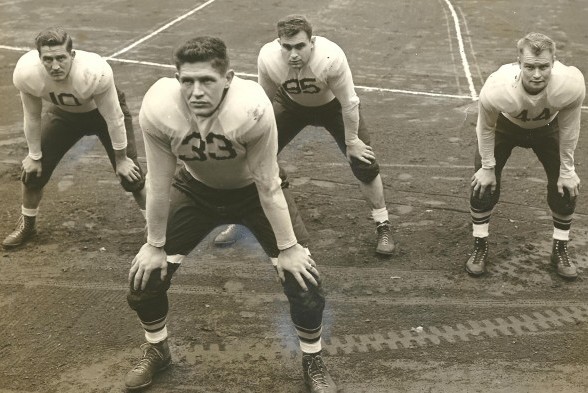
By David Eskenazi and Steve Rudman
Lorenzo Romar is a three-time Pac-10/12 Conference Coach of the Year, has won 20 or more games six times, and directed the Huskies to six NCAA and one NIT tournament appearances. Romar’s record is unmatched in the modern history of University of Washington basketball, but even Romar will have to go some to warrant a night like the one that his UW mentor, Marv Harshman, enjoyed when the Huskies met Washington State in Hec Edmundson Pavilion Feb. 23, 1985.
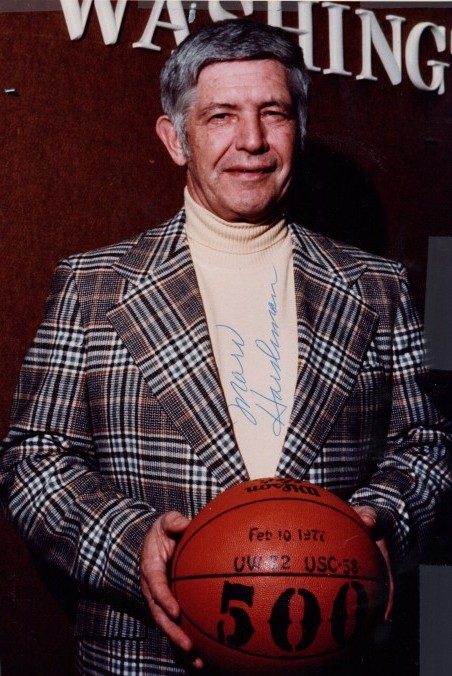
That night, Washington State had the Huskies sucking wind for most of the first half, much to the chagrin of the 9,253 onlookers, the first sellout at Edmundson Pavilion in three years.
Only a Detlef Schrempf-fueled rally cut WSUs advantage at the intermission to 32-31.
A frustrated Harshman trudged off court and headed to the UW locker room to lecture his team. But five minutes later a UW athletic official requested that the coach return to the court: a few people wanted to say hello.
When Harshman arrived in the main pavilion, he found more than 200 men ringing the court, all clapping.
Some were almost as old as the 67-year-old Harshman, several barely half his age. Most resided in the Northwest, but a few traveled across the country to attend the halftime ceremony.
Regardless of age or residence, each had in common that they were coached by Harshman, at Pacific Lutheran University (1945-57), Washington State (1958-71) or Washington (1972-85).
As a gesture of appreciation for what Harshman had done for them, they chipped in to purchase a new, $17,000 pickup truck for him.
To commemorate Harshman’s 13 years at PLU, his 13 at WSU and his 14 at Washington, his ex-players had also brought along 40 roses, which they presented to Harshman’s wife, Dorothy. Former team captains delivered them – 13 from PLUs’s Jim Van Beek, 13 from WSU’s Tom Tommervik and 14 from UW’s Ray “The Machine” Price.
“That was something that made the 40 years worth while,” said Harshman, unaware that a Marv Harshman Appreciation Night had been in the works. I was completely flabbergasted.”
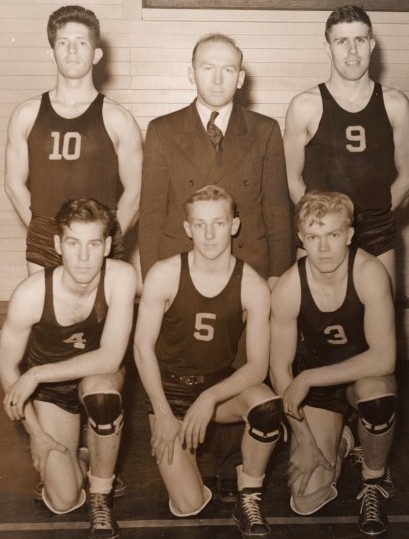
The UW athletic department assisted in the planning of the Harshman tribute with resignation, if not a tinge of melancholy. Harshman’s 14th season with the Huskies would be his last.
Although he produced one of his better teams, a club en route to its second consecutive appearance in the NCAA Tournament, the university administration wanted Harshman removed for a younger, more telegenic coach who would better serve the school’s basketball interests.
It didn’t matter to upper-campus suits that Harshman didn’t want to retire, nor that he could still do the job.
They wanted a change and all pleadings to the contrary fell on deaf ears. So Harshman’s former players organized the appreciation night in what amounted to a spectacular snub of university politics.
Of the 200-plus Harshman disciples ringing the court, Ernie Perrault, Pacific Lutheran’s leading scorer in 1945, knew Harshman the longest, having played on the first team Harshman ever coached.
At that time, Harshman returned from a three-year Navy hitch during which he had been able to play service football. In fact, Just before his discharge in October 1945, Harshman and ex-PLU teammate Marv “Tommy Gun” Tommervik (the pair were popularly known as the “Marvelous Marvs)” led their San Diego Navy team to a 33-6 win over the unbeaten USC Trojans.
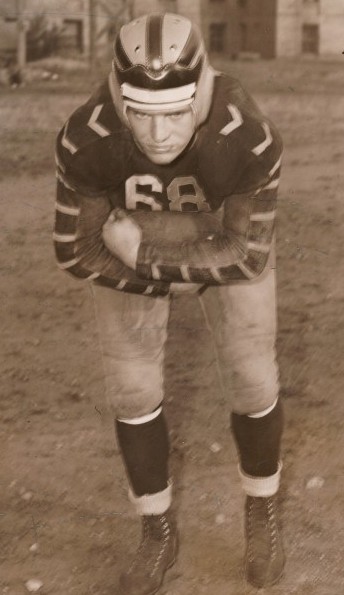
”I also served in the Navy with Marv, said Jack Sully Sullivan, who went on to a long career with the Seattle Post-Intelligencer, notably as a television columnist.
”Most competitive guy Ive ever met. One time, while we were in the Navy, he challenged me to a game of one-on-one basketball. Being taller, I beat him, barely, and it made him mad.
“So he challenged me to a wrestling match. He couldn’t beat me because I was too big. That made him madder. So he challenged me to a boxing match. Sonofabitch broke my nose.”
Harshman eventually planted such deep roots in the state that it now seems surprising that he is not a native.
Born Oct. 4, 1917 in Eau Claire, WI., Marvel Harshman moved west in 1927 when his family relocated to Lake Stevens. He attended Lake Stevens High School, and enrolled at Pacific Lutheran, where he won 13 letters in four sports.
He twice made All-America in football – the Chicago Cardinals selected him in the 15th round of the 1942 NFL draft at No. 134 overall, the equivalent of a fifth-round pick today — and won all-conference honors in basketball (the Pittsburgh Steelers and Philadelphia Eagles also had a strong interest in Harshman, as subsequent images on this page will show).
After his Navy discharge, Harshman returned to PLU to take over as head basketball coach. Not quite ready to abandon his own athletic career, Harshman, along with Tommervik, played for the 1946 Tacoma Indians of the Pacific Coast Professional Football League during the only year of its existence.
Harshman and Tommervik each accepted $7,800 in salary, plus $2,000 in bonuses, from Indians owner Al Davies, who operated Birchfield Boiler on Tacoma’s tideflats, to play for his team rather than sign with the AAFC’s New York Yankees.
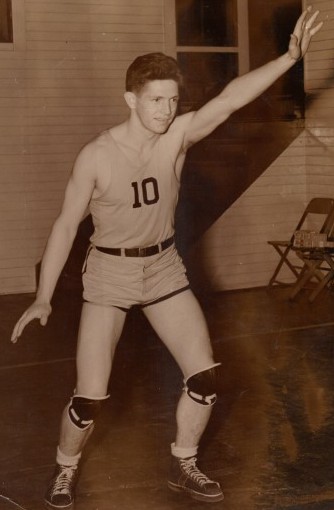
Then, in 1947-48, Harshman suited up for the Tacoma Mountaineeers of the Pacific Coast Professional Basketball League, which went out of business before the start of the 1948-49 season. Harshman also played semi-pro basketball for the Cheney Studs, a club sponsored by Tacoma lumber baron Ben Cheney.
With that, Harshman became a full-time basketball coach and, over the ensuing 13 years, led the Lutes to four NAIA District I championships and four national tournament appearances.
Harshman received an unprecedented seven NAIA District I Coach of the Year awards at PLU as he compiled a record of 241-121.
He also headed up the school’s football program for six years (1951-57). Then Washington State beckoned.
After replacing the legendary Jack Friel, who ran the Cougars’ program for 30 years, Harshman went 241-121 in 13 seasons in Pullman, three times finishing as the Pac-8 runner-up to UCLAs dynasty teams, then moved to Washington, where he went 246-146, won two Pac-10 championships and produced three NCAA and two NIT teams.
When UW administrators shoved Harshman into retirement, he ranked as the winningest active NCAA Division I coach with a record of 642-448, and was just a year removed from his selection as KODAK Division I Coach of the Year.
He also had three Pac-10 Coach of the Year awards in his resume and a Pan American Games gold medal in his pocket. He was retired a matter of weeks when the Naismith Memorial Hall of Fame welcomed him as a member.
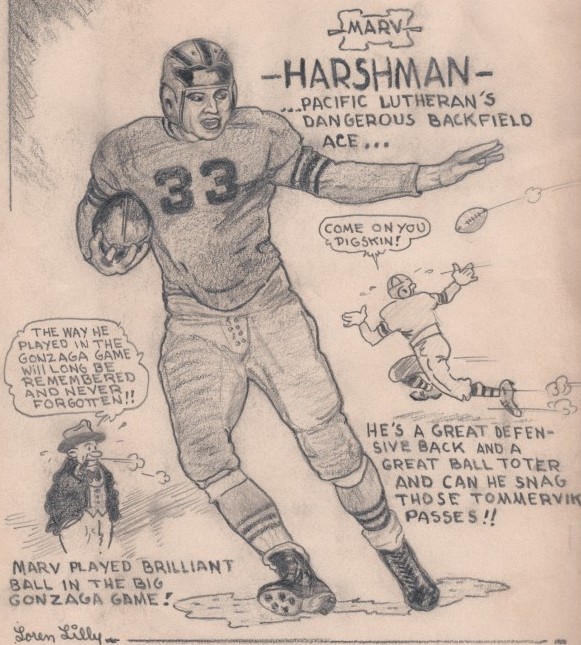
By then, Harshman had taught the game to all kinds, from High Harry McLaughlin, a ’40s artifact and the first player Harshman ever saw dunk, to docile Peter Gudmundsson, whom Harshman couldn’t get to dunk with a cattle prod, to James Edwards and Detlef Schrempf, who had NBA careers lasting 19 and 16 years, respectively.
“I wouldn’t trade my experiences with him for anything, said former Husky Chester Dorsey (1974-77), who ran an auto salon business in Seattle for many years. “I learned a lot from him.”
“The thing Ill always remember, said Chuck Curtis, who entered the PLU Athletic Hall of Fame in 1991 as the Lutes’ all-time scoring leader, ”is that Marv always treated you like you were his second family.”
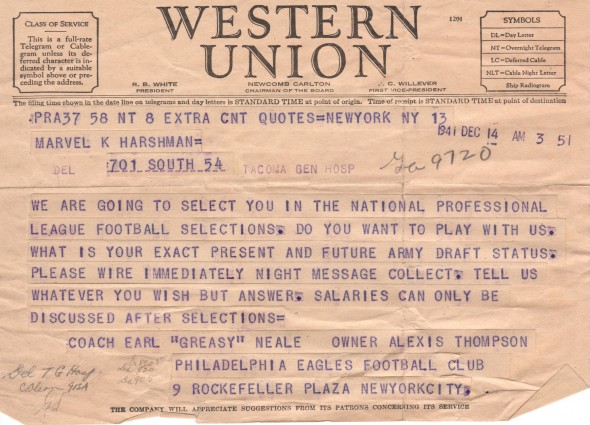
“It’s hard to even be objective about him, said Tom Tommervik, (son of Marv Tommervik), who played at WSU between 1962-66 and became a Tacoma dentist. “I just think so much of the guy. He played a big role in my life.”
Hard to top what Mert Kennedy, one of “Marv’s Midgets” at WSU in 1959 before entering the publishing business, said about his former coach.
“I’m a Cougar and I went to Husky games, he said. ”Marv was the reason for that.”
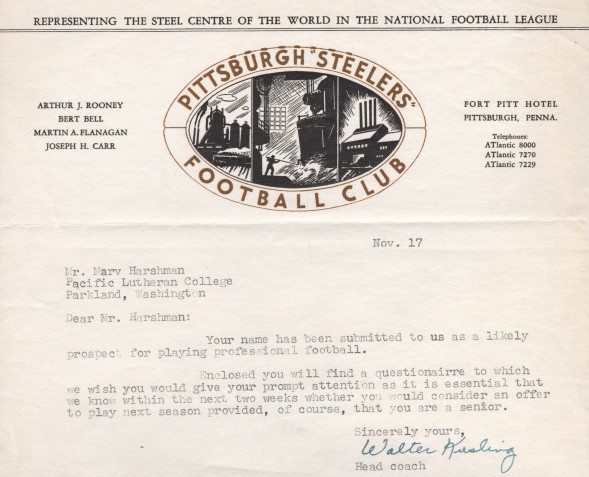
Ray Stein, an excellent player for WSU in the mid-1960s, later went to work for General Electric in Wilmington, NC. He thought enough of Harshman that he traveled back to Seattle for Harshma’s appreciation night.
“What used to amaze me, Stein told the Seattle Post-Intelligencer after arriving for the event, ”is we’d be on road trips and Marv had friends everywhere who would come to see the games. I used to think they were WSU alums. They weren’t. They were just Marv’s friends.
All of the people who played for Marv, added Gene Lundgaard, who replaced Harshman at PLU after Harshman moved to WSU, got something positive out of the experience.
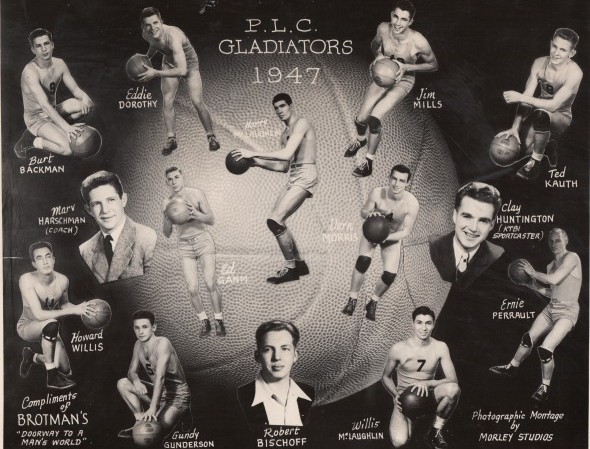
Simply by dint of knowing him longer than anyone, Perrault, who played at PLU from 1945-47, was in a better position to discuss Harshman at the time of his retirement than almost anyone.
Perrault was one of the best players on the first team Harshman coached, the 1945-46 Lutes. A 5-foot-9 guard, Perrault was described in the PLU yearbook as a ”Master of the Maples.” Harshman and Perrault went back farther than that: they were freshman teammates on the 1938 PLU basketball team.
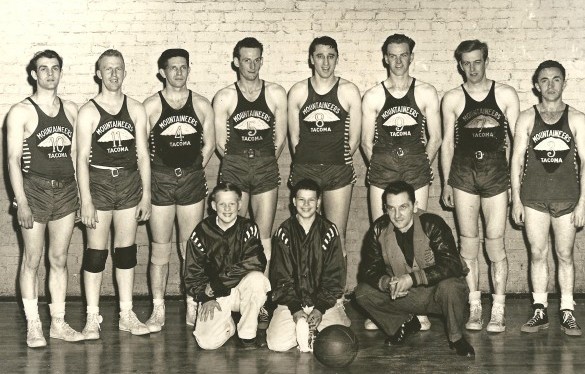
After their World War II military service (Perrault in the Air Force), they reunited at PLU with a different relationship: Harshman was head coach, Perrault one of his best players, along with Jim Mills.
“I consider it a distinction to have played for him,” said Perrault.
During his early coaching years, Harshman, after his stints with the Tacoma Tigers and Tacoma Mavericks ended, liked to commence practice by engaging in three-on-three games with his players.
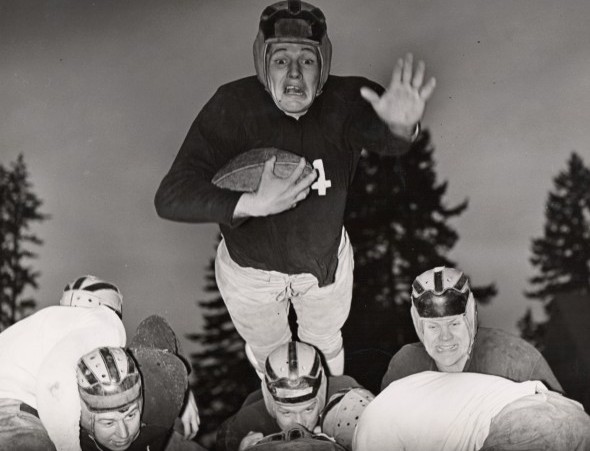
Back then, said Lundgaard, “he was young enough to play with us.”
During his WSU years, Harshman played H-O-R-S-E with his best shooters and routinely beat them.
“He had this crazy shot, said Byron Vadset, WSUs captain in 1964. ”He shot it up and over his back off the backboard. He called it his clincher shot and all of us who played with him got clinched.”
John Quigg came out of Hoquiam High and played at Washington in the early 1970s on teams that featured Louie Nelson and Lars Hansen.
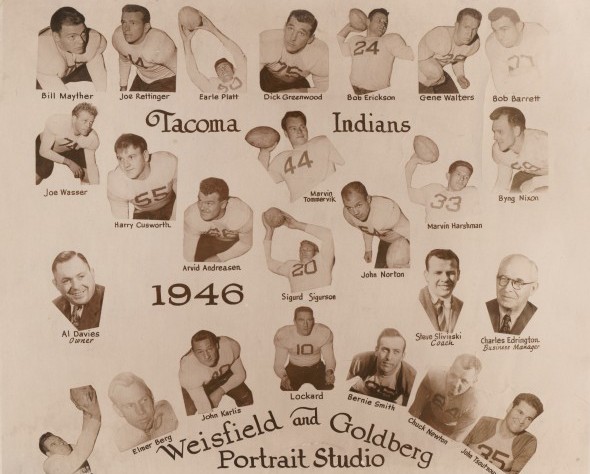
“This happened when Denny Houston was Marv’s assistant, said Quigg. ”We’d get into a new town on a road trip and Denny would hustle up a racquetball game. Harsh looked about 200 years old and Denny looked like he could hardly get along.
“Well, Marv was a good athlete, a really good racquetball player. Denny would get a game with some guys and then he and Marv would clean their clocks and take pride in it.”
Harshman’s PLU teams in the 1950s ranked among the best he ever coached. Featuring Van Beek, Roger Iverson and Curtis, the ”Three Basketeers,” the Lutes played in the NAIA tournament three years running and nearly won it in 1959.
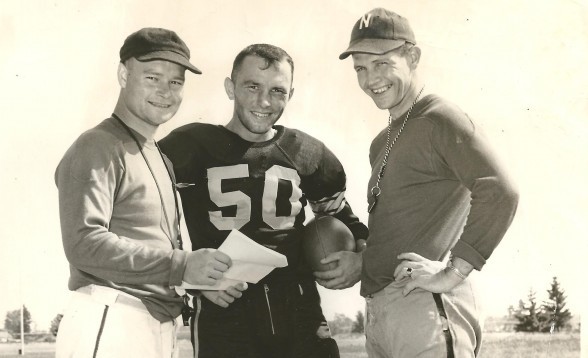
“Marv always knew how to handle players, said Iverson, who became principal at Penninsula High. ”You had the feeling that he always knew what was happening.”
“He was always demanding, added Vadset. ”He would holler at his players, but in a loving way. You hated to let him down.”
”It can get to you, Clay Damon, a UW guard (1983-87) who went on to become a prominent Spokane dentist, said of Harshmans rants. “Especially in your freshman year. I had to learn to take it, and not take it personally, and not let it affect my confidence. You have to understand that what he says is right and that he’s trying to help you.”
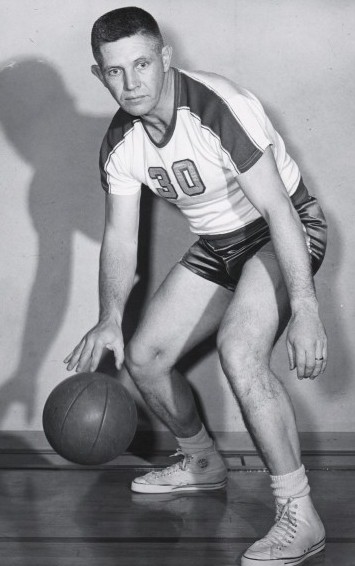
Harshman lasted so long in the coaching profession – “If I did that for 40 years Id be in a mental institution,” said Jim Mossell (UW, 1971-72) — that he inevitably became a man around whom great stories accumulated.
In the late 1960s, while at WSU, Harshman had to prepare the Cougars for a dreaded meeting with a UCLA team that featured Lew Alcindor.
The Cougars, of course, stood no chance, but Harshman improvised. During practice, he had one of his players, Dick Watters, stand on a chair stationed underneath a basket to simulate Alcindors wing span.
”He wanted to give us an idea of what it would be like to be on the floor with someone that big,” Watters recalled.
“I stood on a chair about where Alcindor would position himself on offense. We had a scout team that ran the opposing team’s offense and I was on the scout team. I got to be Alcindor. They’d (his teammates) throw me the ball and they’d be running their cuts and I’d pass off, and once in a while I got to dunk. Marv may have done it for the publicity value, but I think it was a neat idea.”
Through the years, Harshman developed a reputation as a coach who liked to poor-mouth officials. He was never shy about calling them out, but, according to Lou Soriano, a 23-year-referee out of Bremerton considered one of the then-Pac-8’s best officials, Marvs reputation in this regard was mischaracterized.
“There was never anybody more fair to referees than Marv, said Soriano. ”When he criticized us, there probably was a good reason for it.”
When Soriano broke in as a referee, Harshman coached at Washington State.
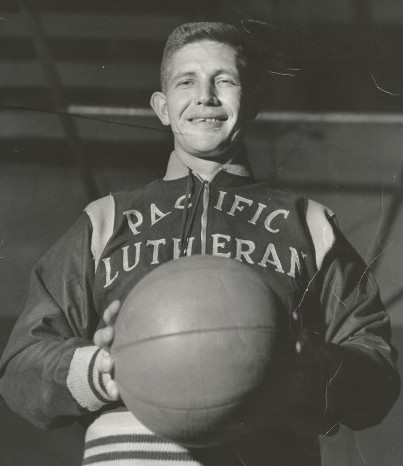
“I officiated four games in a row that Marv lost by one point,” said Soriano. “I began to think there was a hex. It got to the point where I hated to officiate his games. I’m not saying there was a hex, but it bothered me.
“When I was a young official, I made a lot of errors. Marv could have been a force in ending my career, but he stayed with me. I appreciated that.”
The Cougars played Idaho during Harshman’s WSU tenure, and Idaho had a player, last name of “Baxter,” who, Harshman felt, was getting away with too much. Harshman asked Soriano to do something about that Baxter.
Soriano thought Harshman said “that bastard” and gave Harshman a technical.
I misinterpreted what he said, said Soriano. “There was no question I made an error, but Marv laughed it off. I’ve been associated with a lot of coaches, coaches who have gone down in history. Marv is No. 1 in my book.”
Harshman might have gone even deeper into local hoops lore if he had elected to recruit many of the great athletes – but socially borderline individuals — available to him. Instead, Harshman deliberately chose kids rich in character.
“We looked more for character in our kids when we recruited,” Harshman once said, “kids that liked to work hard. We searched out players who had qualities we liked and were willing to spend time working. A lot of the supposedly great players didn’t have the same kind of attitudes.”
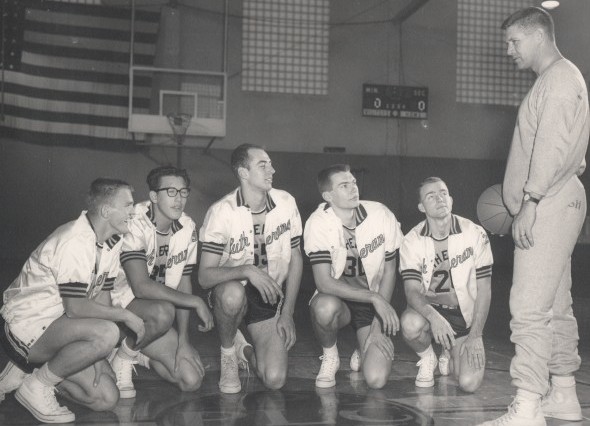
Harshman once recruited a pair of highly touted players out of Los Angeles who would have provided the Huskies a significant talent bump. Not long after both committed to Washington, they backed out, one opting for UCLA, the other for Long Beach State.
Harshman took the two scholarships and offered them to a pair of Bay Area guards — character guys and decent guards, but not nearly of the quality of the pair that de-committed.
Ultimately, the Los Angeles players backed out of going to UCLA and Long Beach State and asked Harshman to restore their scholarship offers. Harshman told them no, he had promised them to the Bay Area guards and wouldn’t renege. Hard to tell how many wins that cost Harshman.
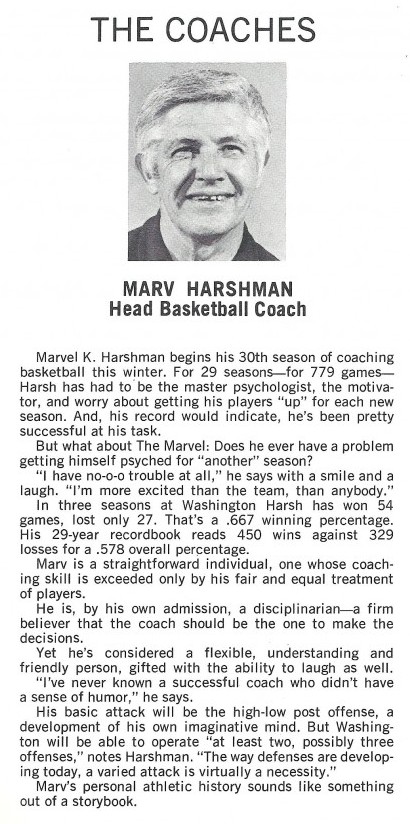
“He treated people fairly,” said Stan Walker, who played at Washington from 1977-80 and notched his name in Husky lore Feb. 22, 1979 when he knocked down a 17-foot jumper with three seconds to play that gave UW a 69-68 upset of No. 1-ranked UCLA.
After Harshman accepted the top job at Washington, he decided to make his first trip back to WSU an inconspicuous one. Jim Mossell, who played for the Huskies in 1971-72, attended that game.
“We were 19-6 and going to Bohler Gym, said Mossell. ”We were shooting before the game and we look over at the bench and there was Marv wearing a long wig and sunglasses.
”He put it on so Cougar fans wouldn’t recognize him. He wore it until the introductions. It was great. It also helped because were nervous going for our 20th (win) and it kind of broke the ice.”
A photograph of Harshman wearing that disguise ran in newspapers all over the country. So did the photo of Harshman bearing a funny-nose-and-glasses prank. That happened in 1976 when the Huskies went to Eugene to play Dick Harter’s Oregon Ducks.
By that time, Harter had certified himself as one strange number: Eccentric, disciplinarian, weirdo, madman, take your pick of descriptions. For example, Harter made his players stand at mid-court during warmups with their arms folded, staring down the enemy.
“They’d have half of their players shooting and the other half standing there staring at you, said Kim Stewart, a Husky from 1975-78.
With Harshman’s blessing, a UW aide scrounged around and found a half dozen false-face masks, which featured big bushy eyebrows and glasses, the kind found in trick stores.
Before taking the court for the pre-game shootaround, UW players shoved the glasses down their warmups. Then, when Oregon’s starters lined up and began their stare down, the Huskies donned the disguises, turned around and went fake nose-to-nose with the suddenly flustered Ducks.
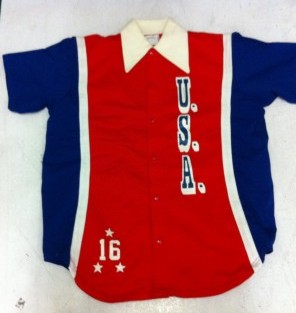
“You could hear a pin drop, Stewart recalled. “The Oregon players didn’t know what to do. We had some fans there and they were laughing like crazy. Harter was livid. Oregon was totally upstaged.”
”Marv was not only someone you could go to learn about basketball, but for advice on life in general. He helped me when I was going through some problems, said Rick Erickson, a WSU letterman from 1968-70.
Stewart was Washington’s best player and captain when he suffered a season-ending knee injury in 1978. Rather than abandon Stewart, Harshman kept him on the traveling squad for the rest of the season. Two years later, after Stewart returned to Seattle after playing in Europe, he sought out Harshman.
“I was lost, Stewart admitted. “I hadn’t finished school and I had no idea where I was going. So I went to see Marv and he brought me on as his JV coach and told me to finish school. He didn’t have to do that. (Stewart later became a successful high school coach.)
Mert Kennedy (WSU, 1957-59) once had to go to the hospital to get treated for a blood clot.
”Harsh came up and sat with me until the nurse kicked him out, said Kennedy.
Four years after Harshman coached his final game, a former UW athletic department colleague who worked in public relations, suffered a serious burn (hair caught on fire) in an in-home accident.
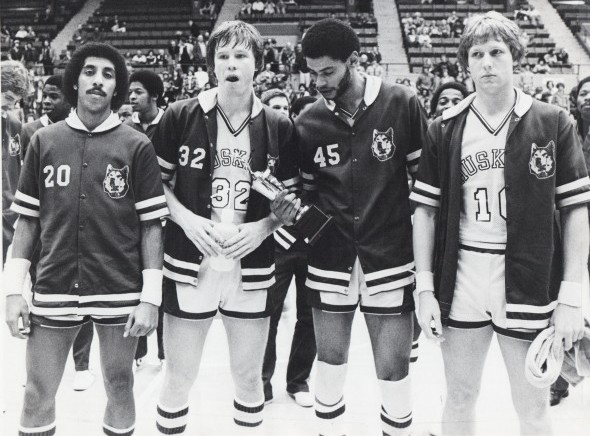
The incident sent the publicity man to the Harborview Hospital burn center for a couple of weeks, and he spent much of that time unconscious.
Still, Harshman, by then a member of the Basketball Hall of Fame (1985), the Husky Hall of Fame (1985), the WSU Athletic Hall of Fame (1986) and a year away from induction into the PLU Hall of Fame (1990), sat by his former colleague’s bedside for hours daily, the only one from the school to do so.
Today, Harshman is 94 1/2 and in reasonably good condition. He’s living in an assisted-care facility in Tacoma, managed to attend a few of Washington’s afternoon basketball games this past season and, as recently as a couple of weeks ago, attended the high school state tournament.
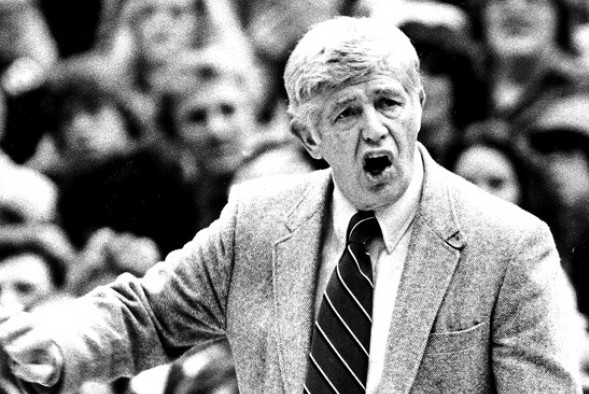
Son Dave thought that they would attend a morning session of the tournament and call it a day. When former Harshman assistant Jud Heathcote found out Harshman would attend, he quipped that Marv would probably “watch a game and sleep a game.”
“We were there 14 frickin’ hours. He was awake the whole time. I was just amazed,” said Dave, who added, “I think for the most part he’s doing well for his age. He doesn’t walk, but we try to get him out to as many things as often as we can. He still looks forward to going and doing.”
What can you say about the guy that hasn’t been said? former UW guard Bob Fronk once asked.
Probably not much. But re-saying it never hurts.
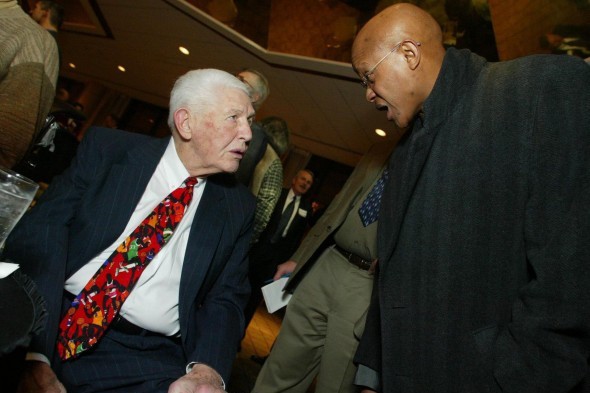
—————————————————-
Many of the historic images published on Sportspress Northwest are provided by resident Northwest sports history aficionado David Eskenazi.Check out Davids Wayback Machine Archive. David can be reached at (206) 441-1900, or at seattlesportshistory@gmail.com

18 Comments
What a great article about a great figure. Thank you for the opportunity to read it.
David Eskenazi and I enjoy these trips into the past. Thanks participating on our journey.
What a great article about a great figure. Thank you for the opportunity to read it.
David Eskenazi and I enjoy these trips into the past. Thanks participating on our journey.
Thanks Dave & Steve for putting together a great article on Marv, our Husky Legend. That night of Marv’s retirement was one of my greatest Husky highlights, Marvs face lighting up seeing all his former players, rolling out the truck and him sitting in his new rocker! Then, after the game, sending him off in a limo to the Towers for a great evening of fun, laughter & tears, what a night!!!!!! It was truly a special time,
Go DaWgs!!!!
Ray Price
the Machine
On behalf of David Eskenazi, thanks for reading it Ray.
Thanks Dave & Steve for putting together a great article on Marv, our Husky Legend. That night of Marv’s retirement was one of my greatest Husky highlights, Marvs face lighting up seeing all his former players, rolling out the truck and him sitting in his new rocker! Then, after the game, sending him off in a limo to the Towers for a great evening of fun, laughter & tears, what a night!!!!!! It was truly a special time,
Go DaWgs!!!!
Ray Price
the Machine
On behalf of David Eskenazi, thanks for reading it Ray.
Steve & Dave,
I very much appreciate the article on my father. He has always been my hero but then I am biased. I look forward to many more of your articles. Dave Harshman
Thank you, Dave. We look forward to having you as a reader.
My mother, Lenore Huntington, went to PLU with Marv. Her scrapbook contains many photos and clippings of Marv and the group of “kids” they all ran around with.
Steve & Dave,
I very much appreciate the article on my father. He has always been my hero but then I am biased. I look forward to many more of your articles. Dave Harshman
Thank you, Dave. We look forward to having you as a reader.
My mother, Lenore Huntington, went to PLU with Marv. Her scrapbook contains many photos and clippings of Marv and the group of “kids” they all ran around with.
In 1964 as a freshman at Washington State I took a PE course in handball. Harshman was the teacher. For the final exam we had to play a game against him (he would have been 47 then). To get an A we had to beat him. I got the A but I always kind of thought he let me win. A great coach and a great guy.
In 1964 as a freshman at Washington State I took a PE course in handball. Harshman was the teacher. For the final exam we had to play a game against him (he would have been 47 then). To get an A we had to beat him. I got the A but I always kind of thought he let me win. A great coach and a great guy.
I started going to PLU basketball games when Harsh was coach because my Dad (Earl Luebker) was covering them for the Tacoma News Tribune. I was 4! Also lucked out when he came to coach at UW in 1972, my freshman year.Harsh and his family have long been an inspiration to me and my family, and it was wonderful to see him this past week-end honoring Roger Iverson for his NAIA honors! Thank you for this wonderful story and pictures–I’ve enjoyed another trip down memory lane and felt compelled to show my appreciation for the story and for the incomparable Marvelous Marv!
I started going to PLU basketball games when Harsh was coach because my Dad (Earl Luebker) was covering them for the Tacoma News Tribune. I was 4! Also lucked out when he came to coach at UW in 1972, my freshman year.Harsh and his family have long been an inspiration to me and my family, and it was wonderful to see him this past week-end honoring Roger Iverson for his NAIA honors! Thank you for this wonderful story and pictures–I’ve enjoyed another trip down memory lane and felt compelled to show my appreciation for the story and for the incomparable Marvelous Marv!